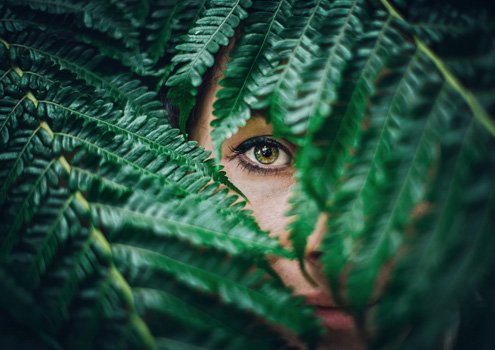Reading time: About 2 minutes
Being observant is practically a job requirement for writers. Here’s how to get better at noticing…
Once, when I was a teenager, I’d lined up for lunch in the cafeteria with friends. I remember looking at the appalling desserts in the glass case and commenting that the lemon meringue pie looked as though it had been topped with Styrofoam.
Cynical teenager? No! Figurative writer. That was a simile.
I didn’t know where my remark came from (although maybe it was my inner Top Chef) but one of my friends smiled and commented, “You’re great at coming up with phrases like that.”
I’d always seen myself as incredibly well organized rather than hugely creative, but I appreciated the compliment. And then I started trying to develop the habit of making metaphors.
That’s when I became better at noticing.
Why noticing matters
I thought about noticing last week when reading a recent post by Oliver Burkeman, author of the life-changing book Four Thousand Weeks. In his post, Burkeman said:
“When it comes to amassing a stockpile of ideas to write or speak about…the most important thing is just to get into the habit of noticing things and making some record of them.
“That’s it! Random quotes you encounter, quirky things people say or do, thoughts or feelings that occur to you, intriguing facts that cross your radar: practice (a) realizing that you’re encountering them, and (b) making a scribbled note, taking a phone photo, anything at all to jog your memory of the moment.”
But more importantly, he continued:
“It’s starkly different from a widespread focus these days on building tricked-out systems for storing or connecting your notes, getting AI to synthesise new insights from them, or storing material you encounter for digesting later on.”
If you’ve never developed the habit of noticing, be aware that it’s practically a job requirement for writers. Think of it as the occupational hazard that makes you better at your work.
Readers always feel the presence (or absence) of observed details. Specific writing is dramatically better than generic text. You see what others miss — or at least you see it differently.
How to build the noticing muscle
Here are three exercises that will help make you better at noticing:
1-Slow down and stare
- Pick one ordinary object or scene and observe for five or more minutes (set a timer — this will feel longer than you think).
- Push past the first obvious observations to the second and third layers.
- Example: Notice not just a “red car” but the crease in the fender and the bumper sticker for a band that broke up in 1999.
2-Capture without judging
- Keep a “noticing notebook,” separate from your main writing.
- Record sensory details, overheard dialogue and odd juxtapositions.
- No need for your observations to be “good” or useful — focus more on being accurate.
- The act of recording trains your brain to notice more — like reps at the gym but less sweaty.
3-Study other writers
- Read writers known for using specific detail. My suggestions are Joan Didion, George Saunders, Annie Dillard and Charles Dickens, but there are also many others.
- Analyze what they notice and how they render it.
- Practice: Take a scene from your own life and describe it in their style.
Common traps to avoid
Don’t confuse noticing with accumulating details. More details won’t always improve your observations. Instead, focus on getting to that second or third layer. Aim for some figurative language — simile, metaphor or personification.
Also, don’t look for the “special” or “pretty” items to observe. If you’re in the Northern Hemisphere right now, for example, avoid writing about fall trees. Yes, they’re beautiful. But find something more mundane. The sidewalk, perhaps? A plastic fork someone dropped in the parking lot?
The compound effect
Noticing builds on itself — what you see today trains you to see more tomorrow. Start with one observation today and then add another tomorrow. Make it a daily habit.
And as you do this, you might reflect on the words of W.B. Yeats: “The world is full of magic things, patiently waiting for our senses to grow sharper.”
If you liked this post, you’ll also like How to write description.
*
Need some help developing a better, more sustainable writing or editing routine? Learn about my three-month accountability program called Get It Done. There is turn-over each month, and priority will go to those who have applied first. You can go directly to the application form and you’ll hear back from me within 24 hours.
*
My video podcast last week addressed whether it’s necessary to write in the morning. You can watch the video or read the transcript, and you can also subscribe to my YouTube channel.
*
Have you figured out how to get better at noticing? We can all learn from each other, so please, share your thoughts with my readers and me in the comments section, below. And congratulations to Rod Baker, the winner of this month’s book prize, for a comment on my Oct. 28/25 blog post about simple vs. simplistic writing. (Please send me your email address, Rod.) Anyone who comments on today’s post (or any others) by Nov. 30/25 will be put in a draw for a digital copy of my first book, 8 1/2 Steps to Writing Faster, Better. To enter, please scroll down to the comments, directly underneath the related posts links, below. You don’t have to join Disqus to post! Read my tutorial to learn how to post as a guest. (It’s easy!)


